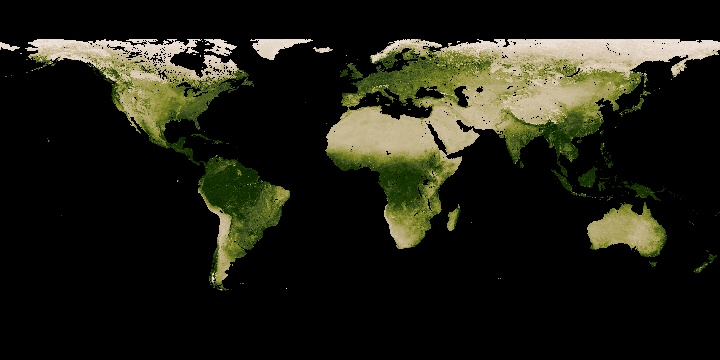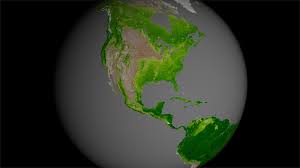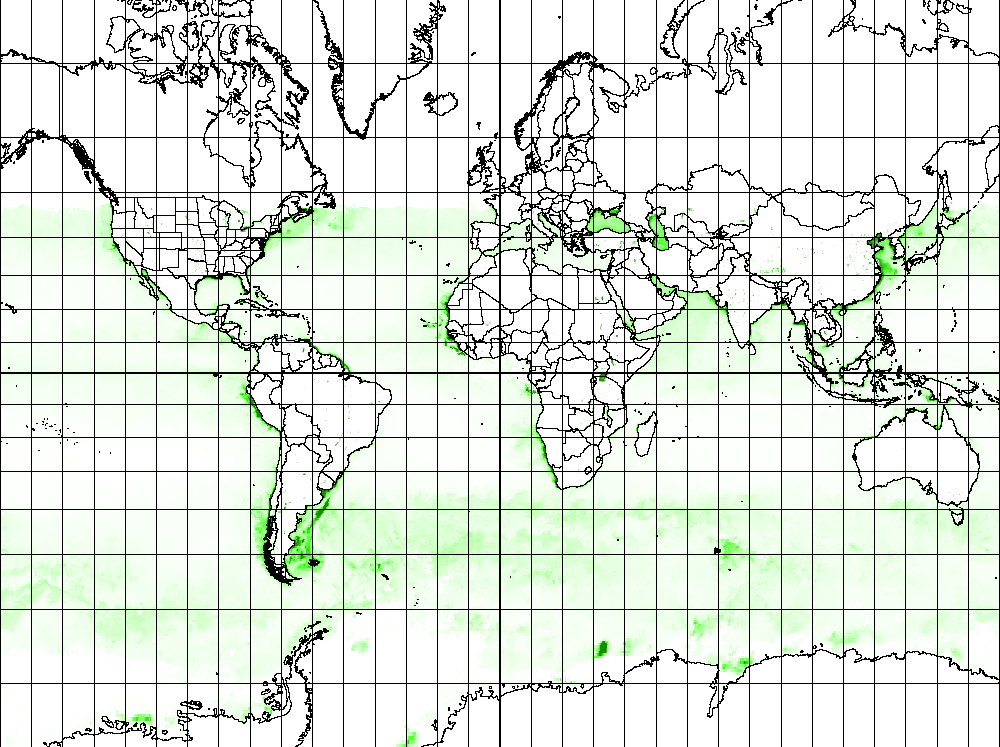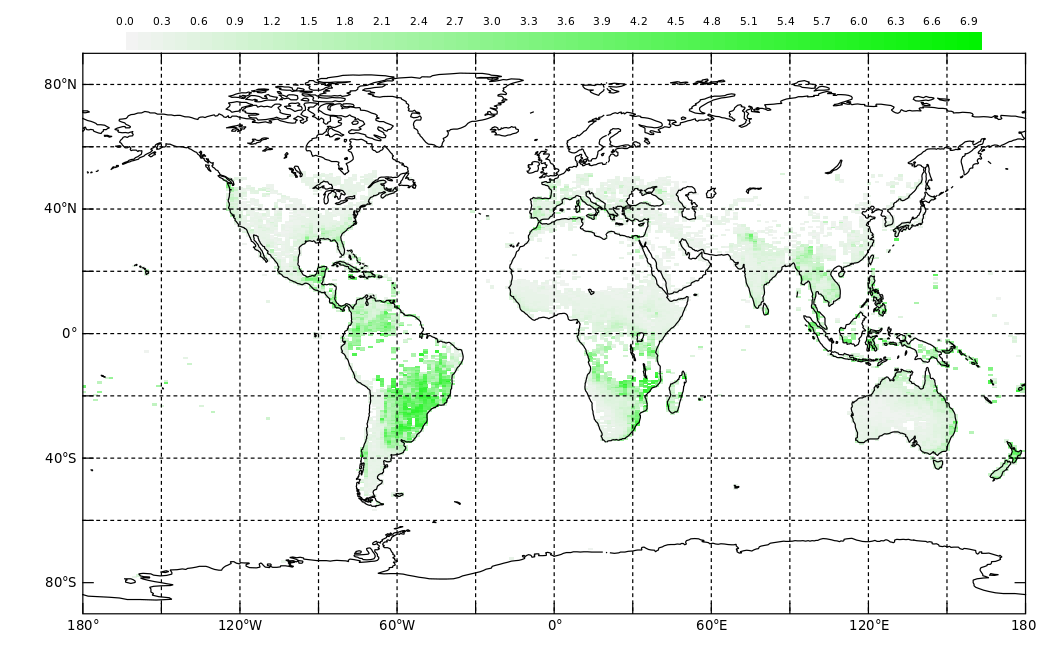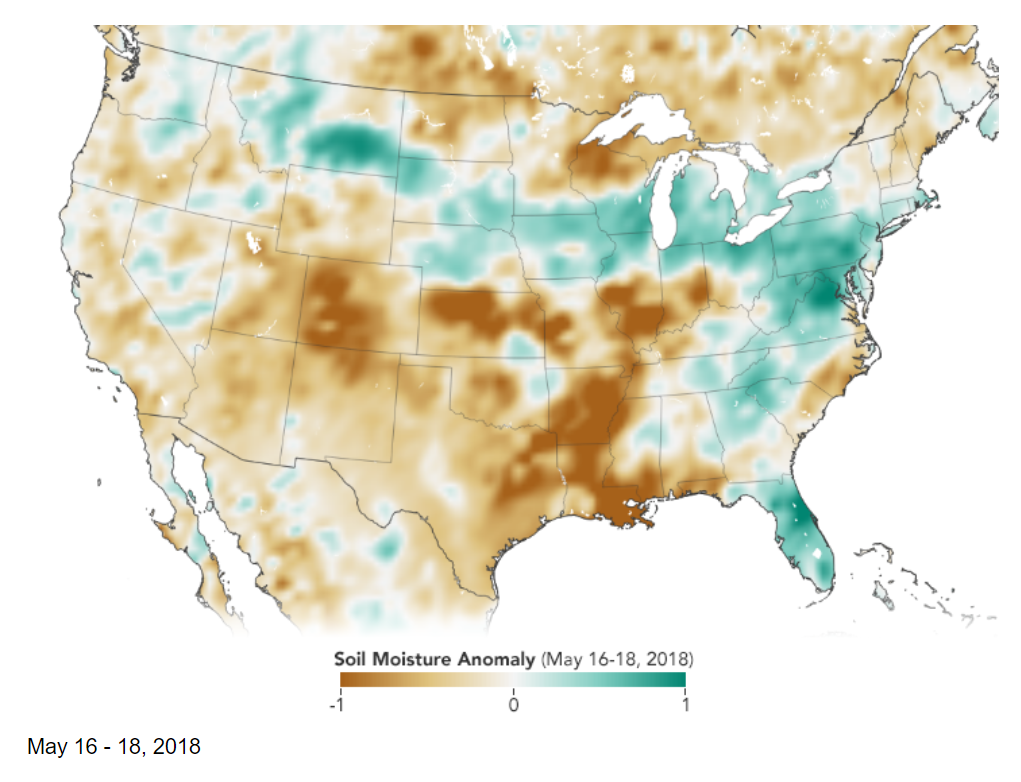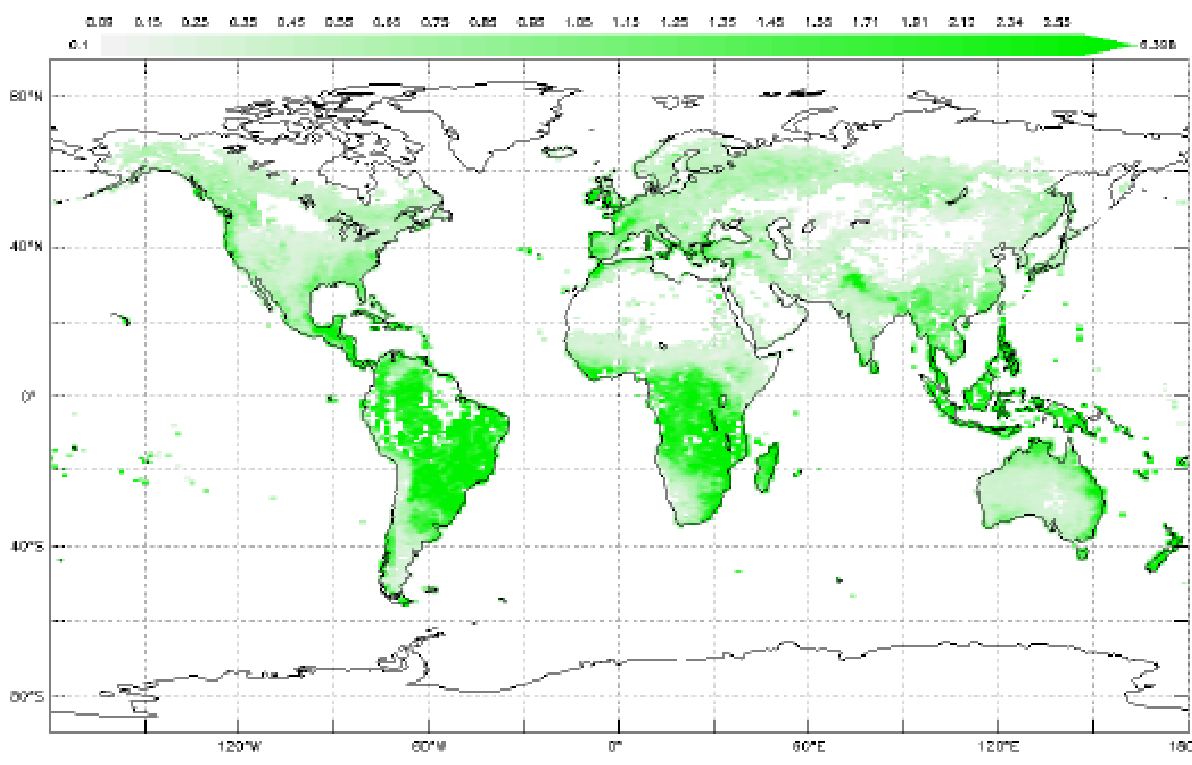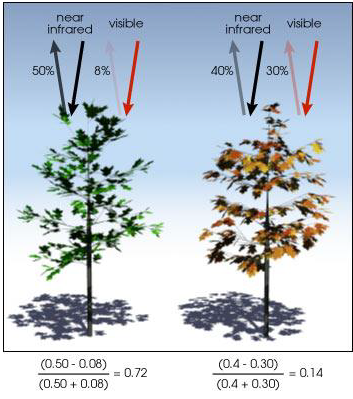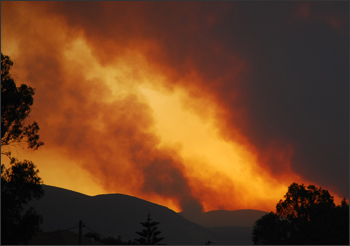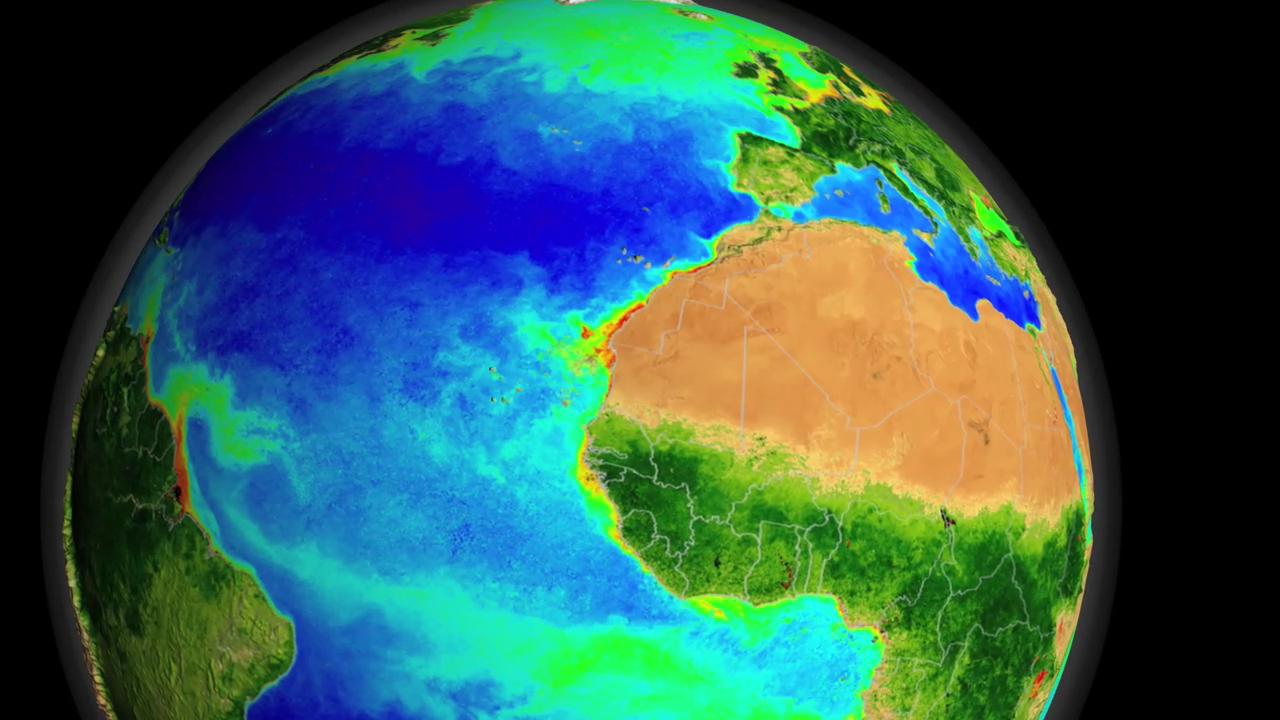Students observe monthly images of changing vegetation patterns, looking for seasonal changes occurring throughout 2017. These data can be used by students to develop their own models of change.
List of all Biosphere Mini Lessons




Students review a video that models the global impact of smoke from fires to develop an understanding of how models can be used to interpret and forecast phenomena in the Earth System.
This mini lesson engages students by watching a NASA video related to plant growth activity around the world using data from the NASA/NOAA Suomi NPP satellite and answering questions on these stability and change relationships.
Students will analyze the monthly seasonal chlorophyll concentration images in our global oceans for the four different months of 2024, and then answer the following questions.
Students observe seasonal images of Monthly Leaf Area, looking for any changes that are occurring throughout the year.
This mini-lesson guides students' observations of soil moisture anomalies (how much the moisture content was above or below the norm) for the continental US in May 2018.
Explore using units in calculations with the Leaf Area Index (LAI). LAI is a ratio that describes the number of square meters of leaves per square meter of available land surface. Because of the units in the ratio, it is dimensionless.
Explore using units for calculations with Normalized Difference Vegetation Index (NDVI). NDVI is a ratio of different light wavelength reflectance which can be used to map the density of green vegetation.
The fires in Greece during the summer of 2007 devastated large tracks of forest and ground cover in this Mediterranean region. Students analyze these data to determine the scale, area, and percentage of the forest impacted by of these fires.
Students review the NASA video showing biosphere data over the North Atlantic Ocean as a time series animation displaying a decade of phytoplankton blooms and answer questions.






